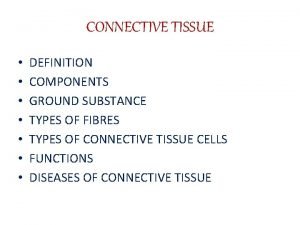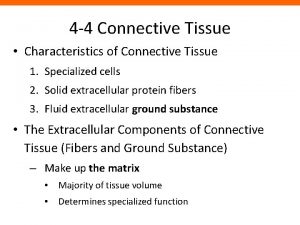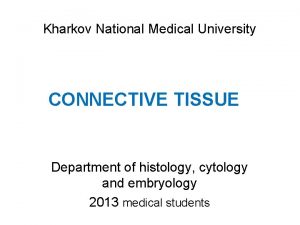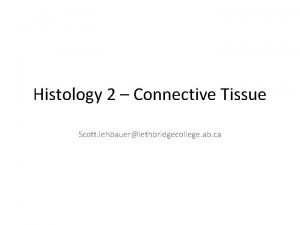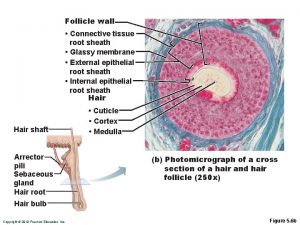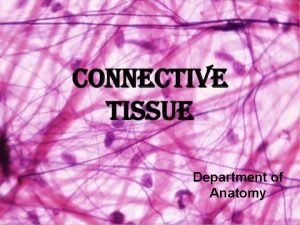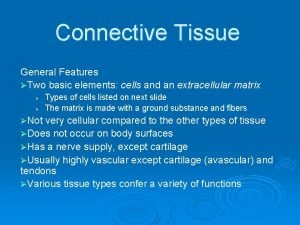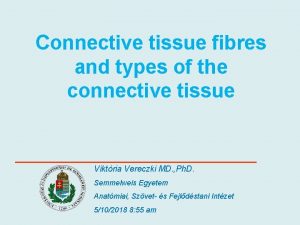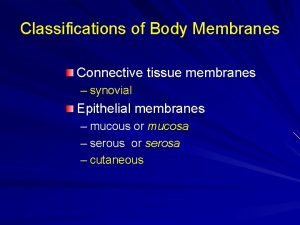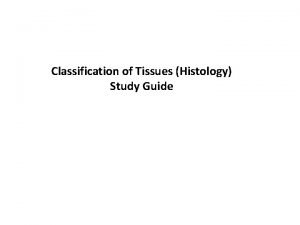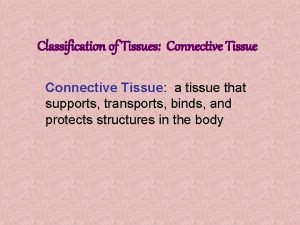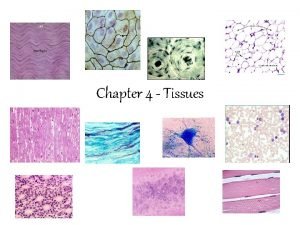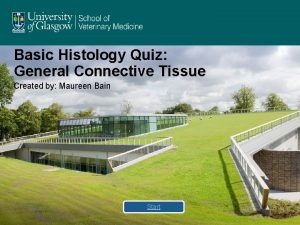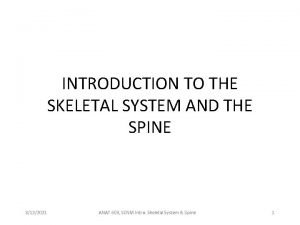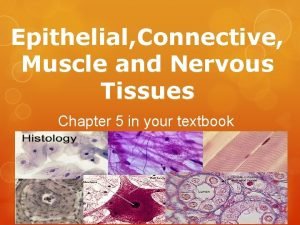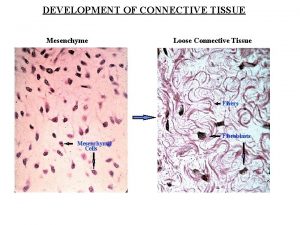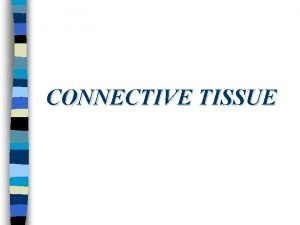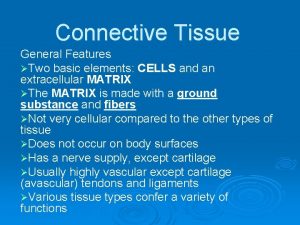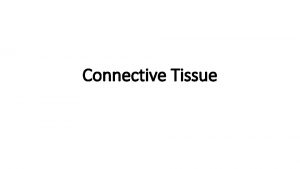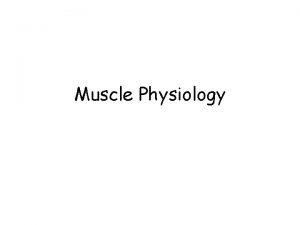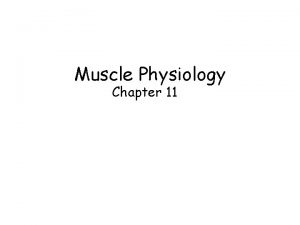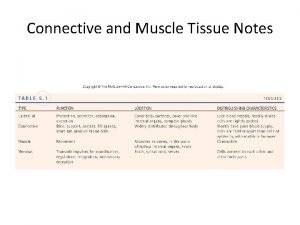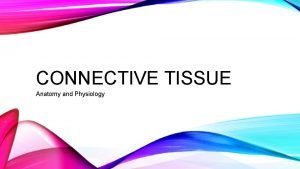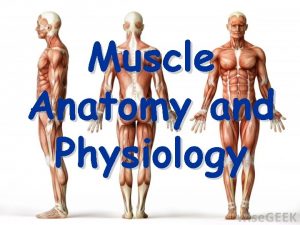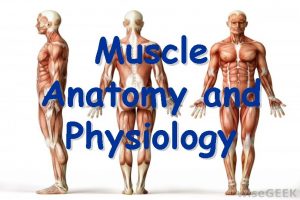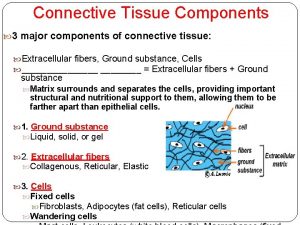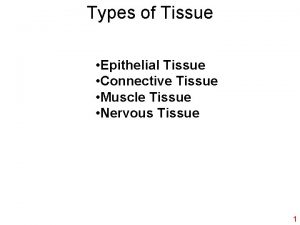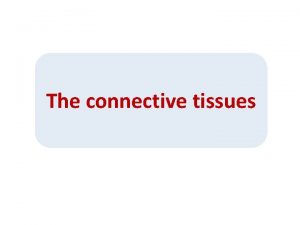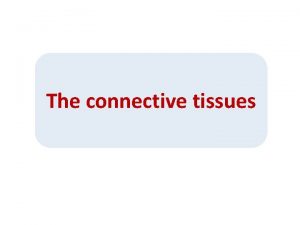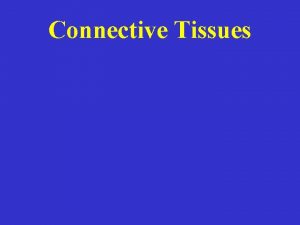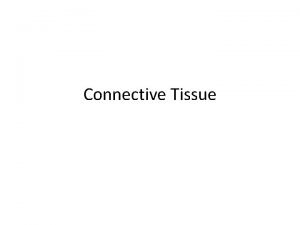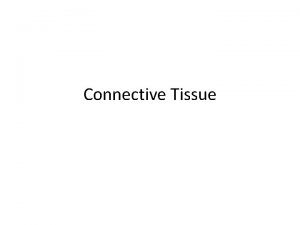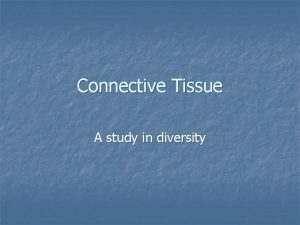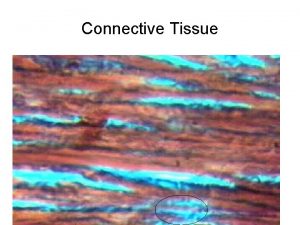Muscle Physiology Chapter 11 Connective Tissue Components Muscle

























- Slides: 25

Muscle Physiology Chapter 11

Connective Tissue Components • Muscle cell = muscle fiber • Endomysium – covers muscle fiber • Perimysium – binds groups of muscle fibers (fasicles) • Epimysium – covers the entire muscle • Tendon – fibrous tissue that connects muscle to bone • Aponeurosis – broad, flat sheet of connective tissue • Fascia – fibrous CT surrounding muscle and tendon


Overview of Muscle Cell • • Muscle cell = muscle fiber Sarcolemma = plasma membrane Sarcoplasm = cytoplasm Sarcoplasmic reticulum (SR) = network of tubules and sacs • Multi-nucleated, multiple mitochondrion • Bundles of myofibrils extend lengthwise & fill sarcoplasm – Composed of thick and thin myofilaments


Sarcomere • Contractile unit of a muscle fiber • each myofibril consists of many sarcomeres



Myofilaments • Myofibrils – made up of 1000 s of thin and thick myofilaments • Thin filaments – Actin – Tropomyosin – Troponin • Thick filaments – myosin



Muscle Excitation • Nerve impulse reaches the end of a motor neuron releases acetylcholine (Ach) • Ach diffuses across the neuromuscular junction and binds with the receptors on the motor endplate

Muscle Contraction • Impulses travel along the sarcolemma t tubules sacs of SR • Ca 2+ is released into the sarcoplasm binds with troponin on thin myofilaments (distracts chaperones) • Tropomyosin shift to expose actin’s active site • Energized myosin heads bind with actin’s active site and pulls thin filament towards center of sarcomere – Requires ATP



Muscle Relaxation • Nerve impulse is complete Ca 2+ is pumped back into the sacs of the SR • Ca 2+ is stripped from the troponin tropomyosin covers the actin’s active site • Myosin heads can no longer bind with actin muscle fiber returns to its resting length

http: //www. sci. sdsu. edu/movies/actin_myosin_gif. html

Rigor Mortis • “stiffness of death” • SR releases excess Ca 2+ myosin heads bind with actin’s active sites contraction of myofilaments • Lack of ATP after death causes cross bridges to “stick”

Energy for Contractions • Hydrolysis (breakdown) of ATP – ATP ADP – ATP binds to return myosin head back to resting position

Oxygen & Glucose • O 2 and glucose are the starting materials for cellular respiration • During rest oxygen is stored in myoglobin – High amounts of myoglobin = red fibers = slow twitch fibers – Low levels of myoglobin = white fibers = fast twitch fibers

Aerobic vs. Anaerobic Respiration • Aerobic Respiration – Oxygen-requiring process – Produces maximum amount of ATP from one glucose molecule • Anaerobic Respiration – Does not require oxygen – Short-term, rapid process to re-synthesize ATP – Produces lactic acid – Burning/soreness in muscles

Heat Production • Some energy from catabolic processes is lost as heat • Muscle release massive amts of heat • Thermoreceptors sense decrease in body temp hypothalamus integrates information signal sent to skeletal muscle to contract shivering homeostatic balance is maintained

Motor Unit • Motor unit = motor neuron + muscle fibers it attaches to • Motor neurons can innervate few to 100 s of muscle fibers • A lower number of muscle fibers within a motor unit = more precise movement – Ex: hand vs abdomen

http: //natchem. files. wordpress. com/2009/11/motor-unit-lg. jpg

Isotonic vs Isometric Contractions • Isotonic – tension remains the same; length of the muscle changes Isometric – tension changes; length of the muscle remains the same
 Ground substance definition
Ground substance definition Adipose tissue
Adipose tissue Characteristic of connective tissues?
Characteristic of connective tissues? Connective tissue meaning
Connective tissue meaning What are specialized connective tissue
What are specialized connective tissue Description of nervous tissue
Description of nervous tissue Dense irregular connective tissue
Dense irregular connective tissue Function hyaline cartilage
Function hyaline cartilage Structures of the hair
Structures of the hair Regular connective tissue
Regular connective tissue Identify tissue
Identify tissue Two basic elements of connective tissue
Two basic elements of connective tissue Elastic fibers vs collagen
Elastic fibers vs collagen Reticular fibers definition
Reticular fibers definition Types of body membranes
Types of body membranes Embryonic connective tissue
Embryonic connective tissue Classification of loose connective tissue
Classification of loose connective tissue Function of cartilage connective tissue
Function of cartilage connective tissue Connective tissue histology quiz
Connective tissue histology quiz Tissues anatomy
Tissues anatomy Embryonic connective tissue
Embryonic connective tissue Specialized connective tissue blood
Specialized connective tissue blood When unstretched transitional epithelium
When unstretched transitional epithelium Mesenchymal tissue
Mesenchymal tissue Reticular connective tissue
Reticular connective tissue Areolar connective tissue
Areolar connective tissue
